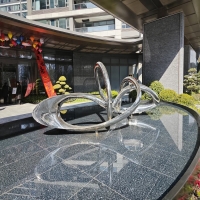Welcome to the website for landscape facilities products and knowledge.
What are the energy or resource requirements for producing landscape round trash cans?
Producing landscape round trash cans involves several energy and resource considerations, depending on the materials and manufacturing processes used. Common materials include plastic, metal, and recycled composites, each with distinct environmental impacts.
1. Material Extraction & Processing:
- Plastic (HDPE/PP): Derived from petroleum, requiring significant energy for refining and molding. Recycling plastic reduces raw material demand but still consumes energy in reprocessing.
- Metal (Stainless Steel/Aluminum): Mining and smelting metals are energy-intensive, though recycled metal cuts energy use by up to 75%.
- Recycled Composites: Often made from post-consumer plastics or wood fibers, reducing virgin material needs but requiring energy for sorting and bonding.
2. Manufacturing Process:
- Injection molding (plastic) and welding (metal) demand high electricity and heat.
- Powder coating or galvanizing for rust resistance adds energy and chemical use.
3. Transportation & Installation:
- Heavy materials like steel increase fuel consumption during shipping.
- Lightweight plastic bins reduce transport emissions but may have shorter lifespans.
Sustainability Tips:
- Opt for recycled-content bins to lower resource depletion.
- Choose durable designs to minimize replacement frequency.
- Local manufacturing reduces carbon footprint from logistics.
By understanding these factors, buyers can make eco-conscious choices for outdoor waste management.
Related search:

Recommendation
Abstract art sculpture, stainless steel metal sculpture, large-scale water feature sculpture